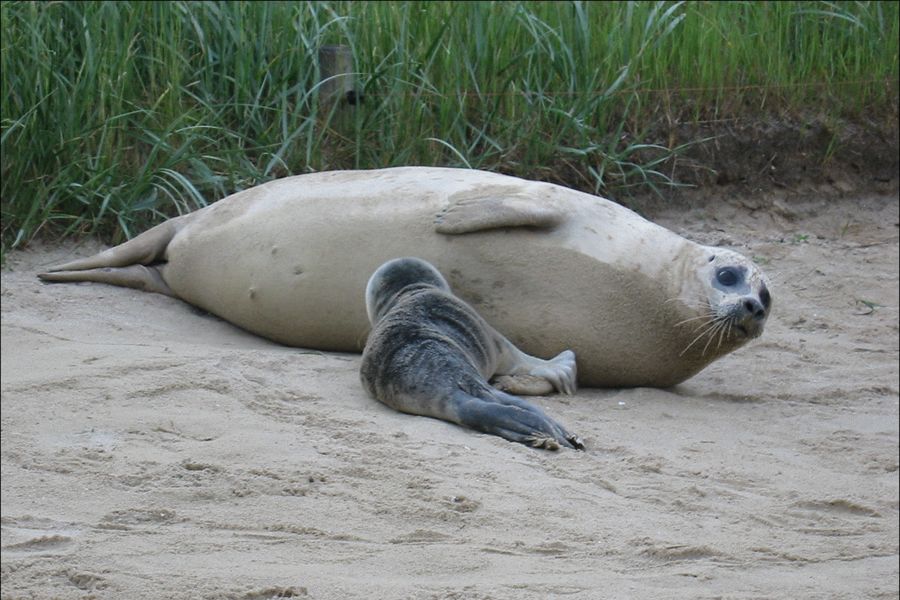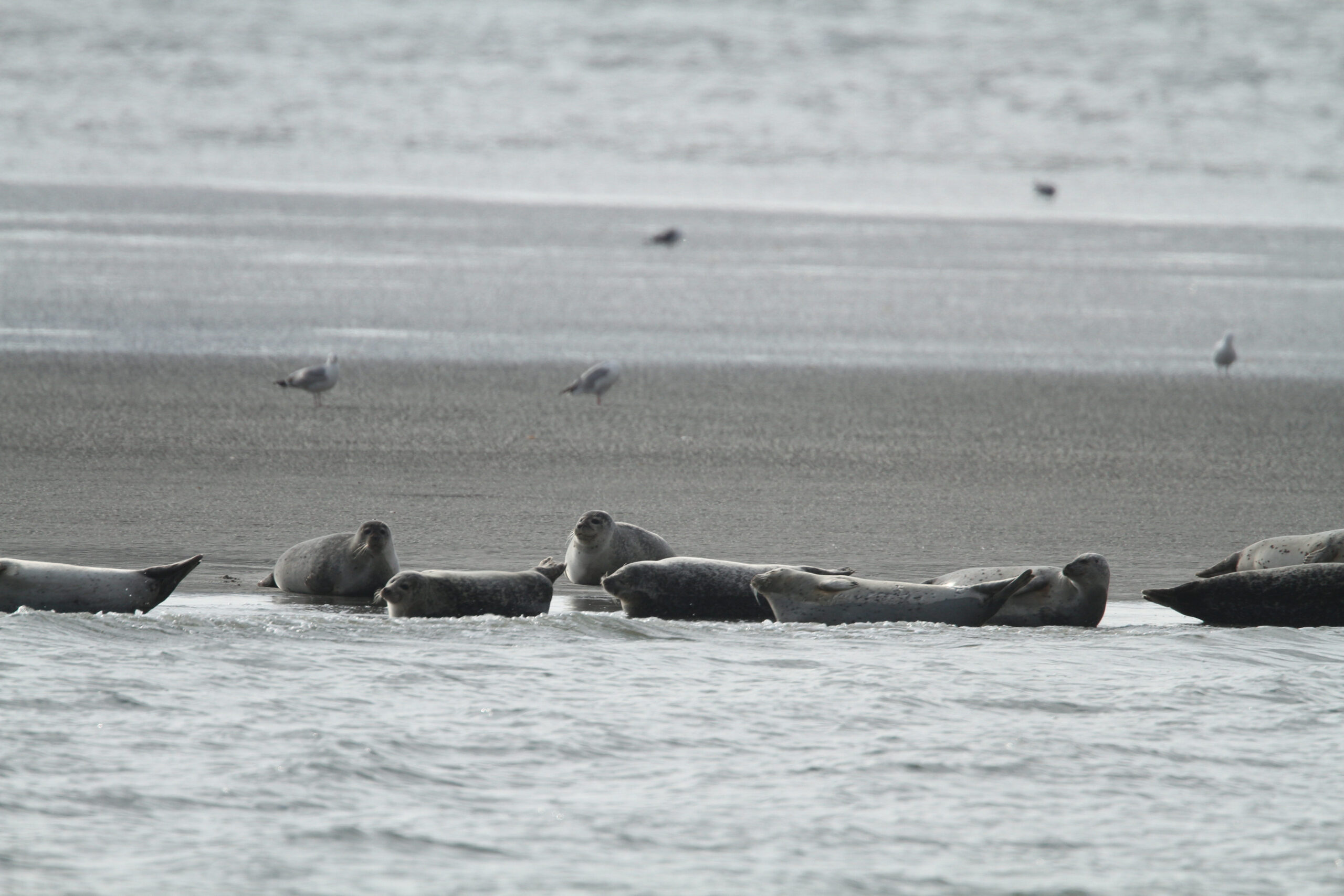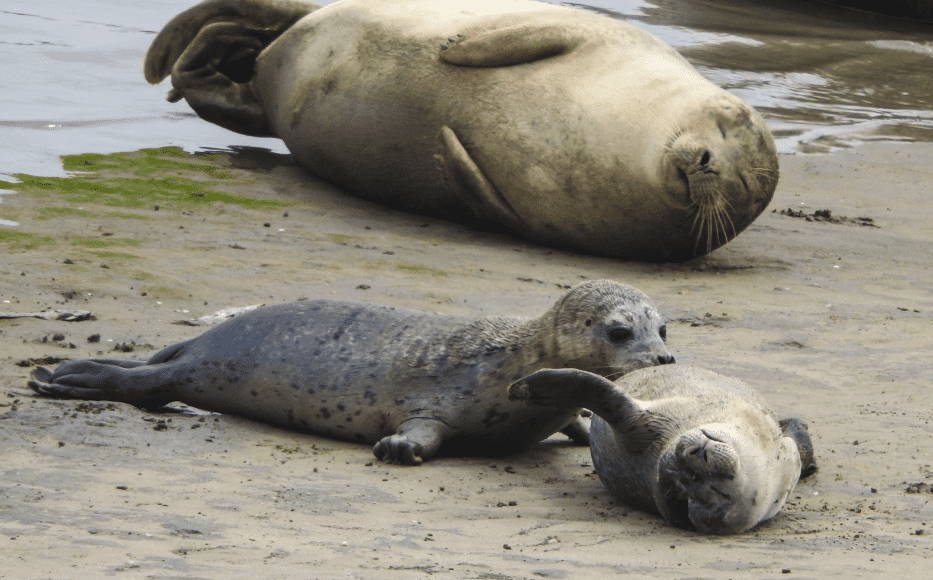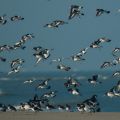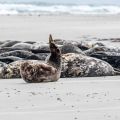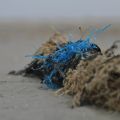Deze site maakt gebruik van cookies, zodat wij je de best mogelijke gebruikerservaring kunnen bieden. Cookie-informatie wordt opgeslagen in je browser en voert functies uit zoals het herkennen wanneer je terugkeert naar onze site en helpt ons team om te begrijpen welke delen van de site je het meest interessant en nuttig vindt.
True seals (Phocidae)
What is a seal? What do seals look like and do you know how they differ from sea lions? How many species of seals are there and where do they live? On this page you will learn more about the seal family.
See also
Phocidae
The group of animals that we call true seals are all members of the family Phocidae .
Pinnipedia (pinnipeds)
Seals are mammals that live in the ocean, also known as marine mammals. Together with the family of sea lions and the family of walruses they are placed in a special clade of marine mammals. This clade consists of so called pinnepeds (Pinnipedia).
Pinnipeds got their name from the shape of their flippers. These animals have very short flippers, but with very long fingers and toes. This makes it look as if they have fins.
Carnivora
Seals belong to the order of mammals that mostly eat meat: CarnivoraThis order also includes animals such as bears, lions, wolves, sea lions and walruses .
Did you know...
Seals do not spend all their life in the water? The land is where they rest, warm up, mate and birth their pups. That is why we call them semi-aquatic: spending a part of their lives on land and in the sea!
Seals are carnivores, which means that they must eat other living animals to survive. They often eat fish, crustaceans and shellfish. Some species can eat very small animals such as krill. Others hunt for even bigger prey such as birds and other mammals.
How do you recognise seals?
You can partially recognize seals by their special physique. They have a long body with a broad chest and a small lower body. This gives them a streamlined, cone-shaped body. Their flippers are very short and wide and they have five digits which are webbed. This makes them perfectly suited for aquatic life.
How do seals differ from sea lions and walruses?
Sea lions and walruses have similar physiques and adaptations, so what makes seals stand out? First of all, seals’ hind flippers cannot be folded underneath their body to walk on. Sea lions and walruses are able do this, which it easier for them to "walk" on land.
Seals have to hobble on their bellies to move on land. The way in which seals move is also referred to as caterpillar-like motion.
Another difference are their ears. Sea lions have small external ear flaps. Seals don't have such visible ears, they have ear holes on the side of the head.
Did you know...
That most seal species are larger than sea lions and walruses? The largest seal is the southern elephant seal (Mirounga leonina). Male southern elephants can weigh up to two tons!
Like a duck takes to water
Seals are strong swimmers. They have to be, as seals spend a lot of time in the water. In general seals can stay underwater for a longer period of time than sea lions and walruses. To hunt for food, some seal species must be able to dive very deep.
A seal has a special way of swimming. To speed up, seals swim with their hind flippers by holding them flat against each other and moving them quickly side to side. You could compare this to how fish swim. Fish also whip their tail to the side to move through the water. The front flippers are a lot smaller than the back flippers. They also don't use it to move forward, but to steer.
Did you know...
The northern elephant seal (Mirounga angustirostrisis a champion in deep diving? They have reached depths as great as 1500 meters. In these depths they hunt for prey such as squid and other deep sea animals. Northern elephant seals can hold their breath for a very long time: almost 2 hours!
(A)social
Most seal species live a solitary lifestyle. This means that they prefer to do almost everything on their own. The only exception is during the mating season, because then the animals congregate in large numbers to birth pups and mate. When mating season is over, the seals moult together, after which they each go their separate ways.
You can see seals resting in groups on beaches and sandbars, but that does not mean that they like to be together. Because seals are less agile on land, they cannot run away from large predators. Therefore, when the seals are on land it is safer for them to be with other seals. Additionally, often times there is not enough space to lie far apart so they are “forced” to be closer than they would want to.
Where do seals live?
Seals can be found in every ocean of the world. They often live along the coasts or on the ice of the North or South Pole. There is even a species of seal that does not live in the sea, but in the freshwater Lake Baikal in Russia! Each species is adapted to live in certain areas and not one seal species can be found all over the world.
Did you know...
There are two seal species living in the Netherlands? The common seal (Phoca vitulina) and the grey seal (Halichoerus grypus).
How many seal species are there?
The true seal family (Phocidae) is often divided into two subfamilies: northern seals (Phocinae) and southern seals (Monachinae). The group of northern seals consists of ten species. The southern seal group is made up of eight species. Worldwide there are a total of eighteen different seal species.
Northern hemisphere seal species
Bearded seal (Erignathus barbatus)
Hooded seal (Cystophora cristata)
Harp seal (Pagophilus groenlandicus)
Ribbon seal (Histriophoca fasciata)
Baikal seal (Pusa sibirica)
Ringed seal (Pusa hispida)
Caspian seal (Pusa caspica)
Largha seal (Phoca largha)
Common seal (Phoca vitulina)
Grey seal (Halichoerus grypus)
Southern hemisphere seal species
Leopard seal (Hydrurga leptonyx)
Weddell seal (Leptonychotes weddellii)
Crabeater seal (Lobodon carcinophaga)
Ross seal (Ommatophoca rossii)
Northern elephant seal (Mirounga angustirostris)
Southern elephant seal (Mirounga leonina)
Hawaiian monk seal (Neomonachus schauinslandi)
Mediterranean monk seal (Monachus monachus)


